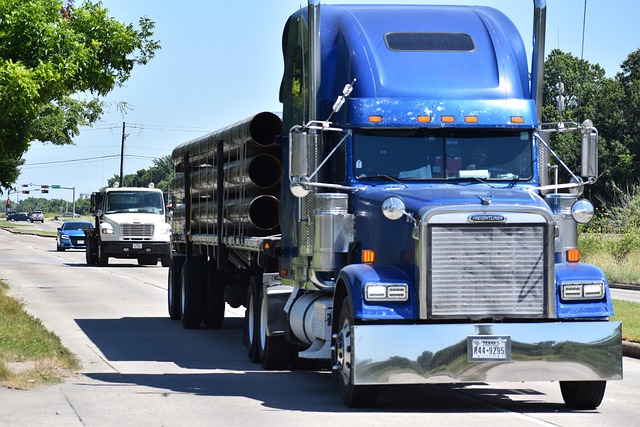Registering a car in California is a straightforward process, but understanding the requirements and gathering the right documents is essential. This comprehensive guide will walk you through each step, from meeting California’s car registration needs to using a VIN verifier for vehicle history checks. By following these simple steps, you’ll be on your way to securing your vehicle’s registration efficiently and ensuring a smooth driving experience in the Golden State.
- Understand California Car Registration Requirements
- Gather Necessary Documents for Car Registration
- Use VIN Verifier to Ensure Vehicle History
- Complete Car Registration Application Process
- Pay California Car Registration Fees and Receive Plate
Understand California Car Registration Requirements

Before registering your car in California, it’s crucial to understand the state’s specific requirements. All vehicles operated on California roads must be properly registered and have a valid, unexpired registration certificate. This process involves several steps, including verifying the vehicle’s identity through its unique VIN (Vehicle Identification Number). In California, this often entails a mobile VIN verification or inspection to ensure the car matches the information on file.
During the registration process, you’ll need to provide proof of insurance, pay registration fees, and pass any necessary emissions tests. Additionally, if your vehicle is new or has been recently purchased outside of California, it might require a title transfer and further documentation. Always consult with local authorities or visit the California Department of Motor Vehicles (DMV) website for up-to-date information on requirements and to ensure a smooth registration process, considering options like mobile VIN inspection for added convenience.
Gather Necessary Documents for Car Registration

Before you begin the car registration process in California, it’s crucial to gather all the necessary documents. One vital tool that will assist you in this is a vin verifier, which can be used for both mobile vin inspection and mobile vin verification. This unique service allows you to check vehicle history from anywhere, ensuring all paperwork is in order before heading to the DMV.
Among the key documents required are your car’s registration certificate, proof of insurance, and a valid driver’s license. For out-of-state vehicles, you’ll need a title transfer or a letter from the previous owner. It’s also recommended to bring along any available service records and maintenance receipts, as these can streamline the registration process and potentially reduce associated fees.
Use VIN Verifier to Ensure Vehicle History

Before diving into the registration process, it’s crucial to conduct a thorough check on your vehicle’s history. One effective way to do this is by utilizing a VIN (Vehicle Identification Number) Verifier service. These services provide an easy and often mobile vin verification process, allowing you to access detailed information about your car’s past. By simply entering your VIN into the checker’s database, you can uncover vital details such as accident history, previous ownership, and maintenance records.
A reliable VIN inspection goes beyond ensuring the vehicle’s legal status; it safeguards against potential fraud and hidden issues. With many online tools available, including mobile vin inspection apps, this step becomes more accessible than ever. By taking advantage of these services, California residents can make informed decisions when registering their vehicles, ensuring a smooth and secure process.
Complete Car Registration Application Process

To complete the car registration process in California, you’ll need to go through a series of steps, including filling out the necessary forms and conducting a VIN (Vehicle Identification Number) inspection. Start by obtaining an application from the California Department of Motor Vehicles (DMV). Ensure you have all required documents, such as proof of ownership, identification, and insurance. Fill out the application accurately, providing detailed information about your vehicle, including its make, model, year, and VIN. This unique identifier is crucial for accurate verification, and a vin verifier can assist in ensuring the number’s validity.
Next, schedule or conduct a vin inspection. In California, this typically involves taking your vehicle to an approved inspection station where a technician will verify the VIN and ensure it matches the vehicle’s records. Alternatively, you can opt for a mobile vin verification service, which brings the inspection to your location, offering convenience during busy schedules. Once your application is complete and the inspection passed, submit both to the DMV, and you’ll be well on your way to registering your car successfully.
Pay California Car Registration Fees and Receive Plate

After completing your California car purchase, it’s time to register your vehicle with the state. One crucial step in this process is paying the required registration fees. These fees cover various costs associated with maintaining a safe and regulated automotive environment, including road maintenance and vehicle emissions testing. Once you’ve paid the fees, typically through the California Department of Motor Vehicles (DMV) website or local office, you’ll receive your new license plate. This plate, complete with your unique Vehicle Identification Number (VIN), signifies that your car is officially registered and ready to hit the roads.
Don’t forget that a reliable VIN verifier can play a significant role in this process. You may opt for a mobile VIN inspection or verification service to streamline the experience. These services utilize advanced technology to validate your vehicle’s history, ensuring all details are accurate before registration. This adds an extra layer of convenience and peace of mind, especially when dealing with potential issues related to ownership or accident records.
Registering a car in California involves understanding state requirements, gathering essential documents, verifying your vehicle’s history using a VIN verifier, completing an application process, and paying relevant fees. By adhering to these steps and utilizing tools like a VIN verifier, you can ensure a smooth registration experience for your new or used vehicle in the Golden State.
